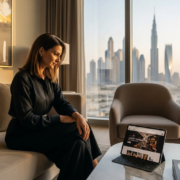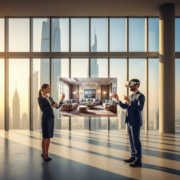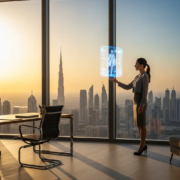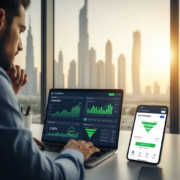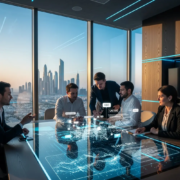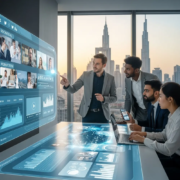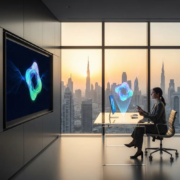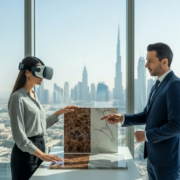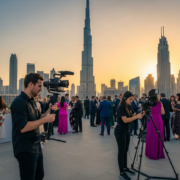Custom Furniture Marketing for UAE Clients.
Custom Furniture Marketing for UAE Clients: Crafting Success in Dubai, Abu Dhabi, and Sharjah
The United Arab Emirates, with its vibrant economy, burgeoning luxury market, and a population that values bespoke experiences, presents a unique and lucrative landscape for custom furniture businesses. From the glittering skyscrapers of Dubai to the cultural heart of Abu Dhabi and the industrial innovation of Sharjah, discerning clients across the emirates seek furniture that is not merely functional but a true expression of their style, status, and personality. However, simply having exceptional craftsmanship isn’t enough; effective Custom Furniture Marketing for UAE Clients is paramount to cutting through the noise and connecting with this affluent and demanding audience. This article delves into the strategies, insights, and local nuances required to excel in marketing custom furniture across these dynamic markets.
Understanding the UAE Market: Demographics, Tastes, and Trends
Before launching any marketing campaign, a deep understanding of the target market is essential. The UAE’s consumer base is diverse, affluent, and highly sophisticated, with specific preferences that differentiate it from other global markets.
The Affluent Consumer Base and Demand for Uniqueness
The UAE boasts one of the highest per capita incomes globally, leading to a strong demand for luxury goods and services. For custom furniture, this translates into a client base willing to invest in pieces that offer unparalleled quality, unique design, and personalized touches. Mass-produced items often fall short of these expectations, creating a significant opportunity for businesses that can deliver truly bespoke solutions. Clients in Dubai, Abu Dhabi, and Sharjah are not just buying furniture; they are acquiring art, statement pieces that reflect their aspirations and lifestyle.
Cultural Influences and Design Preferences
The design aesthetic in the UAE is a fascinating blend of traditional Arabian elegance and contemporary global trends. While there’s a strong appreciation for intricate detailing, rich textures, and warm color palettes often seen in traditional Islamic and regional designs, there’s also a significant demand for modern, minimalist, and European-inspired aesthetics. Many clients seek a harmonious fusion of these styles, requiring custom furniture makers to be versatile and culturally attuned. Understanding how to incorporate elements of local heritage with sleek, modern lines is a powerful selling point.
Growth of Residential and Commercial Projects
The constant development in the UAE, especially in major cities like Dubai and Abu Dhabi, fuels a continuous demand for new furnishings. Luxury villas, high-end apartments, boutique hotels, corporate offices, and sprawling commercial complexes are all potential clients for custom furniture. Each project, whether residential or commercial, seeks unique solutions that align with its specific brand identity or personal vision. Marketing efforts must therefore cater to both B2C and B2B segments, highlighting the ability to handle projects of varying scales and complexities across Sharjah and beyond.
Digital Savvy Population and Research Habits
The UAE has one of the highest internet and social media penetration rates in the world. Consumers, regardless of their income bracket, are highly digital-savvy and conduct extensive online research before making significant purchases. This means that a strong online presence is not just an advantage but a necessity for any custom furniture business aiming to succeed. Clients will scour websites, social media platforms, and review sites to gather information, compare options, and assess the quality and reputation of potential suppliers before even considering an inquiry. Effective Custom Furniture Marketing for UAE Clients absolutely must leverage digital channels.
Developing a Robust Digital Marketing Strategy for Custom Furniture
In a market as digitally advanced as the UAE, a multi-faceted digital marketing strategy is crucial for reaching and engaging your target audience. This goes beyond just having a website; it involves a comprehensive approach that builds visibility, credibility, and leads.
Search Engine Optimization (SEO) for Local Reach
For custom furniture businesses, local SEO is paramount. Potential clients in Dubai, Abu Dhabi, and Sharjah will typically use search terms like “custom made furniture Dubai,” “bespoke sofa Abu Dhabi,” “luxury furniture design Sharjah,” or “furniture manufacturers UAE.” Optimizing your website and online listings (like Google My Business) for these specific keywords and geographic locations will significantly improve your visibility in local search results. This includes creating location-specific landing pages, ensuring consistent NAP (Name, Address, Phone) information across all platforms, and garnering local reviews. A solid comprehensive SEO services strategy can make all the difference.
Engaging Social Media Marketing
Visual platforms like Instagram and Pinterest are goldmines for custom furniture brands. High-quality imagery and video showcasing your craftsmanship, finished projects, and design process are essential. Beyond static posts, utilize Instagram Stories, Reels, and Live sessions to offer behind-the-scenes glimpses, answer questions, and build a community. Facebook remains vital for broader reach and targeted advertising. Consider collaborations with local interior designers, architects, and lifestyle influencers who align with your brand’s luxury positioning to expand your reach within Dubai, Abu Dhabi, and Sharjah.
Content Marketing: Educating and Inspiring
A well-crafted content strategy positions you as an authority and source of inspiration. This can include blog posts on topics like “Choosing the Right Wood for Your Custom Dining Table,” “Trends in Luxury Bedroom Design in Abu Dhabi,” or “How Custom Furniture Elevates Your Sharjah Office Space.” Offer guides, case studies of successful projects, and articles that address common client questions about materials, finishes, and the customization process. This educational content not only attracts organic traffic but also nurtures leads by demonstrating your expertise.
Paid Advertising (PPC) and Retargeting
Google Ads and social media advertising (Facebook, Instagram, LinkedIn) allow for highly targeted campaigns. You can geo-target specific areas within Dubai, Abu Dhabi, and Sharjah, demographic segments, and interests. PPC campaigns are excellent for capturing demand from users actively searching for custom furniture solutions. Retargeting campaigns, which show ads to users who have previously visited your website or interacted with your content, are highly effective in nudging potential clients further down the sales funnel, reminding them of your unique offerings.
Email Marketing
Once you’ve captured leads, email marketing becomes a powerful tool for nurturing relationships. Send personalized newsletters featuring new designs, exclusive offers, testimonials, and invitations to private viewings or workshops. Segment your email list to deliver highly relevant content, whether it’s for residential clients seeking a new living room set or commercial clients looking for bespoke office solutions. An effective email strategy keeps your brand top-of-mind and encourages repeat business and referrals across the UAE.
Showcasing Craftsmanship: Visual Content and Storytelling
In the custom furniture industry, seeing is believing. The quality of your visual content directly reflects the perceived quality of your product. For Custom Furniture Marketing for UAE Clients, this aspect cannot be overstated.
High-Quality Photography and Videography
Invest in professional photography and videography. Showcase your finished pieces in beautifully styled settings, highlighting intricate details, material textures, and the overall aesthetic appeal. Include close-ups of joinery, upholstery, and unique features. Lifestyle shots, either in client homes or professionally staged environments, help potential buyers visualize how your furniture will look and feel in their own spaces in Dubai, Abu Dhabi, or Sharjah. Videos can offer a more dynamic view, showing different angles and demonstrating functionality.
Virtual Showrooms and 3D Visualisations
As technology advances, so too do client expectations. Offering virtual showrooms or 3D visualization tools allows clients to explore your collection remotely and even see how a custom piece would look in their own room. Augmented Reality (AR) apps that let users “place” furniture virtually in their space can be a game-changer, significantly reducing hesitation and increasing conversion rates. These tools are particularly appealing to the tech-savvy UAE audience.
The Journey of Creation: Behind-the-Scenes
Authenticity resonates deeply. Share the story behind your furniture. This could involve videos of your artisans at work, showing the meticulous handcrafting process, from initial design sketches to material selection, cutting, sanding, and finishing. Highlight the passion, skill, and dedication that goes into each piece. This “maker’s journey” content builds trust, conveys the value of custom work, and establishes an emotional connection with clients in Sharjah, Abu Dhabi, and Dubai.
Client Testimonials and Case Studies
Nothing is more powerful than social proof. Feature testimonials from satisfied clients, ideally accompanied by photos or videos of their custom furniture in situ. Detailed case studies, outlining the client’s initial needs, the design process, challenges overcome, and the final solution, provide tangible evidence of your capabilities. This demonstrates not just your skill in crafting furniture but your ability to understand and fulfill unique client visions, a critical aspect of strategic advertising campaigns.
Building Brand Loyalty and Trust: Reviews, Testimonials, and After-Sales
In a high-value industry like custom furniture, trust and reputation are everything. Building strong relationships with clients leads to repeat business and invaluable word-of-mouth referrals.
The Power of Online Reviews
Actively encourage and respond to online reviews on platforms like Google My Business, Facebook, and industry-specific directories. Positive reviews build credibility and attract new clients, while thoughtful responses to negative feedback demonstrate your commitment to customer satisfaction. Showcase your best reviews prominently on your website and social media channels. Clients in Dubai, Abu Dhabi, and Sharjah often consult reviews before making premium purchases.
Collaborative Design Process
Emphasize a collaborative design process where clients feel genuinely involved in every step. Transparent communication, regular updates, and opportunities for feedback during the design and fabrication stages build confidence and ensure the final product perfectly matches their vision. This personalized experience is a key differentiator for custom furniture providers and a cornerstone of successful Custom Furniture Marketing for UAE Clients.
Exceptional Customer Service and After-Sales Support
From the initial inquiry to post-delivery, every interaction should be professional, courteous, and efficient. Offer clear warranties, provide maintenance tips, and be responsive to any post-installation questions or concerns. Exceptional after-sales support can turn a satisfied customer into a loyal advocate, ensuring they return for future needs and recommend you to their network.
Loyalty Programs and Referrals
Reward repeat clients with exclusive benefits, early access to new designs, or special discounts. Establish a referral program that incentivizes existing clients to spread the word about your business. A happy client in Dubai recommending you to their neighbor in Abu Dhabi is an incredibly powerful marketing tool that money cannot buy.
Navigating Logistics and Client Expectations in the UAE
Beyond the glamour of design and marketing, the practicalities of delivery, installation, and communication are crucial for client satisfaction in the UAE.
Timeliness and Professional Delivery
Punctuality and adherence to timelines are highly valued in the UAE. Clearly communicate lead times and delivery schedules, and make every effort to meet them. Professional, on-time delivery and installation services reflect positively on your brand and prevent potential frustrations. Ensure your delivery teams are well-trained, respectful of client properties, and efficient. Consider utilizing a reliable local logistics partner if you lack in-house capabilities, especially when delivering across emirates like from Dubai to Abu Dhabi or Sharjah.
Flawless Installation Services
Custom furniture often requires specialized installation. Offer professional, seamless installation services performed by skilled technicians. Ensure they are equipped with the right tools and knowledge to assemble and place complex pieces without damage or disruption. A smooth installation process is the final touch that leaves a lasting positive impression.
Communication and Language
Given the diverse expatriate population in the UAE, offering multilingual support (especially English and Arabic) can be a significant advantage. Clear, prompt, and professional communication throughout the project lifecycle is essential. This includes responding quickly to inquiries, providing regular updates on progress, and addressing any concerns transparently. If your team needs support in this area, consider collaborating with an agency that offers creative content solutions tailored to the UAE’s linguistic diversity.
Understanding Local Regulations and Materials Sourcing
Be aware of any local regulations concerning materials, imports, and quality standards. If you source materials internationally, understand the customs procedures and duties to ensure smooth operations and accurate pricing. Transparency regarding material origins and quality is highly valued by discerning UAE clients. This is where an experienced partner like Artsun advertising agency can help navigate the complexities of local market entry and brand positioning.
Measuring Success and Adapting Your Custom Furniture Marketing Efforts
Effective marketing isn’t a “set it and forget it” endeavor. Continuous monitoring, analysis, and adaptation are vital for sustained success in the competitive UAE market.
Key Performance Indicators (KPIs)
Establish clear KPIs to measure the effectiveness of your marketing strategies. These might include website traffic (organic, referral, social), lead generation (inquiry forms, phone calls), conversion rates (leads to sales), customer acquisition cost, average order value, and return on investment (ROI) for paid campaigns. Track these metrics regularly to understand what’s working and what isn’t for your Custom Furniture Marketing for UAE Clients.
Analytics and Reporting
Utilize tools like Google Analytics, social media insights, and CRM (Customer Relationship Management) systems to gather data. Generate regular reports that summarize performance and highlight trends. This data-driven approach allows you to make informed decisions and optimize your campaigns for better results across Dubai, Abu Dhabi, and Sharjah. If you’re looking for expert guidance, Artsun advertising agency offers professional web design and analytics integration services.
Market Research and Feedback
The UAE market is dynamic, with tastes and trends evolving. Continuously conduct market research to stay abreast of new design preferences, material innovations, and competitor activities. Solicit feedback from your clients, both formally and informally, to understand their evolving needs and satisfaction levels. This proactive approach ensures your offerings remain relevant and appealing.
Agility and Iteration
Be prepared to be agile. If a particular marketing channel isn’t performing as expected, don’t hesitate to pivot. Experiment with new strategies, refine your messaging, and adjust your budget allocation based on performance data. The ability to iterate quickly and adapt to market shifts is a hallmark of successful businesses in the UAE.
Frequently Asked Questions (FAQ)
Q1: What’s the best way to reach high-net-worth individuals in the UAE for custom furniture?
A1: Reaching high-net-worth individuals requires a multi-pronged approach focusing on exclusivity and luxury. This includes targeted digital advertising on platforms they frequent (e.g., LinkedIn, high-end lifestyle websites), collaborations with luxury interior designers and architects, participation in exclusive design exhibitions in Dubai and Abu Dhabi, and leveraging private networking events. High-quality visual content showcasing bespoke projects is crucial, as is establishing a reputation for unparalleled quality and service.
Q2: How important is Instagram for custom furniture businesses in Dubai?
A2: Instagram is extremely important for custom furniture businesses in Dubai, and indeed across the UAE. It’s a highly visual platform where users seek inspiration and discover brands. High-quality imagery and video (Reels, Stories) showcasing your craftsmanship, finished projects, and behind-the-scenes processes are essential. Engaging with interior designers, architects, and lifestyle influencers on Instagram can also significantly expand your reach to relevant audiences looking for unique furniture pieces.
Q3: Should I focus on residential or commercial clients in Abu Dhabi and Sharjah?
A3: Both residential and commercial clients offer significant opportunities in Abu Dhabi and Sharjah. Residential clients often seek unique, personalized pieces for their homes, offering higher margins per piece. Commercial clients (hotels, offices, restaurants) provide larger project volumes. It’s often advisable to start by identifying your core strength and target market, then gradually expanding. Many custom furniture businesses find success in a hybrid approach, catering to both, as the principles of bespoke quality and design often appeal to both segments.
Q4: What role does sustainability play in custom furniture marketing in the UAE?
A4: Sustainability is an increasingly important factor in the UAE market, particularly among environmentally conscious consumers and for corporate clients seeking to meet CSR objectives. Highlighting the use of ethically sourced materials, sustainable manufacturing practices, durability, and the timelessness of custom furniture (reducing fast furniture waste) can be a significant marketing advantage. Communicating your commitment to sustainability can enhance your brand’s appeal and resonate with a growing segment of the market in Dubai, Abu Dhabi, and Sharjah.
Conclusion: Crafting Your Niche in the UAE Furniture Market
The market for custom furniture in the UAE is ripe with opportunity for businesses that understand its unique dynamics. Success hinges on more than just superior craftsmanship; it requires a sophisticated and culturally attuned approach to Custom Furniture Marketing for UAE Clients. By understanding the affluent, digitally-savvy consumer base, developing a robust digital strategy, showcasing your artistry through compelling visuals and storytelling, and fostering unwavering trust and loyalty, you can carve out a distinctive and highly profitable niche in Dubai, Abu Dhabi, and Sharjah.
The journey to becoming a leading custom furniture brand in the UAE is an exciting one, demanding both creativity and strategic execution. Ready to elevate your custom furniture brand’s presence in Dubai, Abu Dhabi, and Sharjah? Contact Artsun advertising agency today for a tailor-made marketing strategy that understands the unique pulse of the UAE market and helps you connect with your ideal clients.

